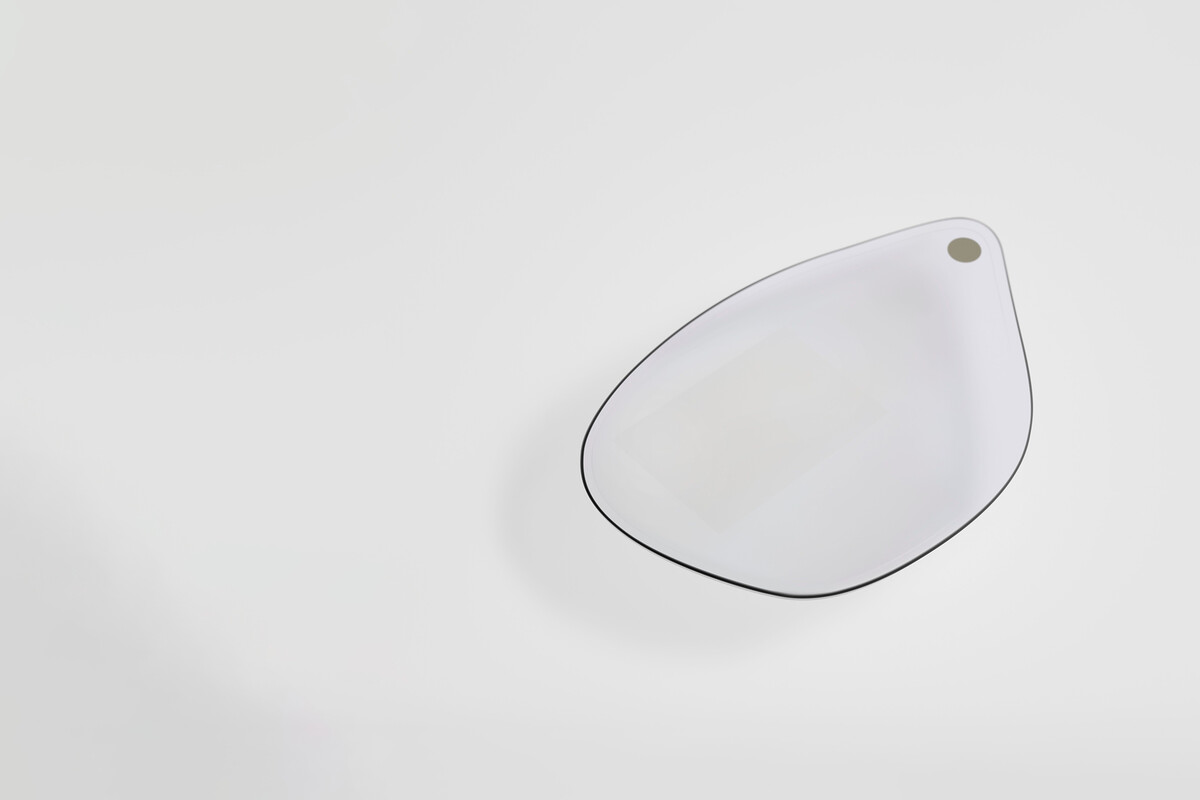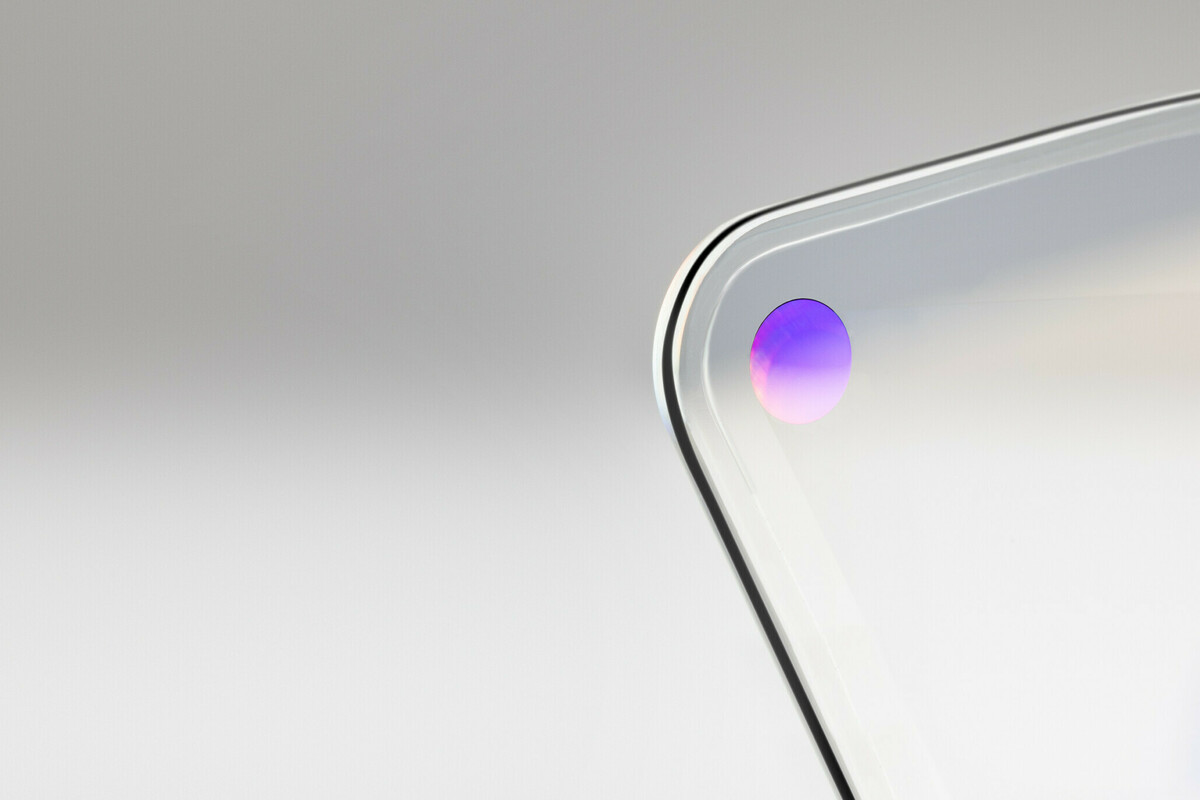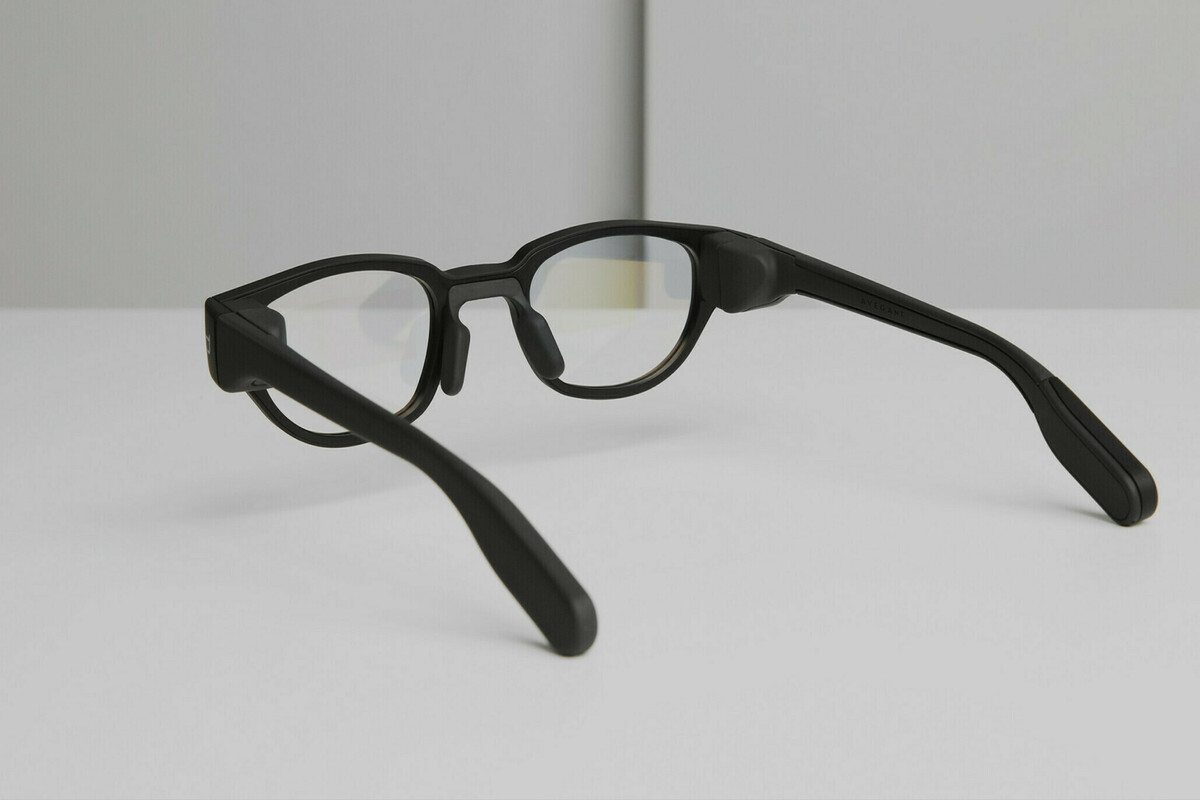Materializing visions for XR with Dispelix see-through displays
Dispelix develops and delivers transparent waveguides that are used as see-through displays in extended reality (XR) devices. Our optical combiner technology is well-suited to a wide range of form factors, from near-eye to head-up displays.
SUMMARY OF INSIGHTS
- The application and technology ecosystems for XR devices are maturing.
- Optical see-through displays contribute substantially to the user experience of XR devices.
- Dispelix’s comprehensive technology portfolio and its powerful engineering capabilities allow optical combiner customization and tailored solutions for specialized XR use cases.
- Dispelix standard, in-house waveguide combiners feature compact eyeglass forms with full, vibrant colors and sharp virtual imagery. This option offers a scalable, verified near-eye XR display with a fast time to market.
- Continuous engagement with the XR ecosystem is one of Dispelix’s key success factors. Strategically aligned ecosystems drive fast commercialization and substantial value from XR technology for Dispelix’s customers.
- Dispelix has existing partnerships and collaborations with volume production foundries specialized in advanced display technologies and a solid track record of scaling up disruptive photonics technologies.
- Dispelix manages the complete component lifecycle from design to customer delivery. We take care of new design verification and volume production validation, ensure that the final component quality and long-term reliability targets are met, and manage customer deliveries according to confirmed orders.
Disruptive display technology
We are entering the era of extended reality (XR) – an era where we will witness a profound merger of display and user interface. Unlike traditional displays, XR displays create an image stream with depth of view that is seamlessly merged with our natural, real view. Emerging XR is accompanied by a game-changing user interface evolution that will transform the way we work, learn, and interact with each other.
XR is empowered by optical see-through technology, which delivers the fundamental advantage of XR: the ability to overlay digital content onto a real, human field of view. In the context of end devices, it is the optical see-through display that drives user comfort and the benefits of unit economics. The most advanced optical see-through displays provide high-quality virtual images, enable compact form factors and wearable comfort, and a price point that significantly lowers the barrier for broader user adoption both in enterprise and consumer markets.
Until now, the lack of high-performance XR hardware encompassing all three critical aspects of user comfort – social, wearable, and visual – has held back the broader adoption of wearable XR technology in the consumer and enterprise spheres. This has now changed. Technology building blocks, particularly combiner optics, have advanced tremendously, today providing the level of optical performance that most users expect. While there are many potential optics solutions for XR devices, it is the emergence of waveguide combiners that is driving the transition. Waveguide combiners today provide the winning hand – optical performance, form factor, and economies of scale – needed for commercially viable XR hardware.
In an XR device, the optical combiner is a product-defining component. It defines the form factor and the esthetic appeal, and significantly contributes to the user experience. Dispelix’s unique technology portfolio enables ingenious grating solutions and waveguide architectures for many kinds of XR use cases. Designing waveguide displays involves solving complex technological challenges using sophisticated software and hardware technology. Dispelix is one of only a handful of companies capable of creating solutions that meet the high expectations of today’s end users.
The XR market is gearing up for optical see-through
Most market players today agree that optical see-through has a pivotal role to play in the race to commercialize XR and realize its true benefits. XR is becoming a competitive advantage in fields like smart factories, maintenance and repair, logistics and warehousing, medicine, healthcare, and aerospace and defense. In addition, with the right end-device design and price point, XR has the potential to empower many lifestyle and entertainment use cases.
XR technology can be exploited by a wide array of market segments including top-tier consumer electronics and technology companies and strategically focused enterprise companies. The potential applications range from versatile everyday XR eyewear to highly specialized enterprise applications, and these two extremes often entail different priorities.
From a waveguide engineering perspective, all use cases are intriguing regardless of the market segment. By pushing the boundaries of diffractive waveguide technology, we can gear our customers up for the future.
A strong partner for your go-to-market strategy
At Dispelix we work with our strategic technology partners and leading device manufacturers to bring XR display technology to market. These companies profoundly understand the enterprise and consumer expectations for XR hardware. This puts them in a unique position to drive meaningful value from XR technology.
We apply our expertise in diffractive waveguide technology to original design manufacturers’ reference designs. We help them create concept versions of XR devices that can be scaled up to volume production quickly. The reference designs serve as a platform, allowing for a degree of customization based on the product owners’ preferences and the final use case.
As a key component provider, we support system designers with display integration in XR devices. We ensure light engine compatibility by optimizing the waveguide grating according to the source luminous spectrum and beam characteristics. We want to ensure our customers have the flexibility to tailor the color space, the ultimate image resolution, and the mechanical design for their desired use case.
Materials
The waveguide displays are fabricated on transparent substrates specifically developed for XR applications. Substrate materials used by Dispelix feature an advanced combination of characteristics, including high transparency, a high-refractive index, and low wavelength dispersion. On a waveguide display these translate into high brightness efficiency, a wide field of view, and a pleasant color gamut. To ensure high durability, we utilize only inorganic materials in our waveguide combiners. We actively seek out and systematically test novel photonics fabrication methods, integrating those deemed viable into our manufacturing concept, and we perform material stress tests in the early evaluation phase to ensure they are compatible with the reliability requirements. We work closely with substrate and coating developers to ensure the availability of critical high-performing materials for our waveguides.
Production
Dispelix’s volume production is outsourced to world-leading manufacturing foundries that are specialized in advanced display technologies and have a solid track record of scaling up disruptive technologies. Close collaboration with these foundries ensures the process is established and scaled up with the latest measurement technology and industry-standard quality frameworks in place. This ensures that components meet our strict quality and long-term reliability standards.
Metrology
Because XR is a fast-developing technology platform, there are currently no broadly accepted industry standards to rely on. However, any commercialization of disruptive technology is critically dependent on verified metrology data. Volume production scale-up requires accurate, repeatable, and reproducible measurement methods and equipment. We work in close co-operation with world-leading metrology equipment manufacturers to ensure we have the latest measurement technology available to support our product development processes. Equally importantly, we ensure that all our outsourced production lines comply with our internal metrology and quality standards and have the latest, most advanced metrology tools for inline and end-of-line quality control.
Reliability qualification
Long-term component reliability is critical for Dispelix’s technology platform. It is built into our component design starting from material selections. Reliability testing conducted in the prototype phase ensures potential weaknesses are addressed early in the design process. Our inorganic waveguide combiners can withstand exposure to temperature and humidity variations, and UV radiation. Stress tests needed for reliability qualification are outsourced to certified laboratories capable of performing industry-standard reliability tests.
Light engines
A waveguide combiner and light engine combine to form an optical display module, which is a unit that contributes to XR user experience and image quality. Together they define the essential characteristics of the virtual display, like image positioning, aspect ratio, and field of view, as well as the factors impacting display image quality such as resolution and contrast, brightness, and color gamut. Our standard waveguide combiners are designed to be compatible with a wide range of commercially available LED and laser light engine technologies. We support our customers and partners by providing guidelines for interface mechanical design, optimal beam characteristics, and luminous spectrum. Dispelix’s custom-combiner designs are tailored to the unique light engine characteristics defined by the customer, whether it be an LED or laser light engine.
The first choice for those who are serious about scaling up
Waveguide engineering with Dispelix can take two paths: A fully customized solution matching the customer’s unique use case, or a fast-lane approach with a standard see-through display optimized for everyday wearable AR glasses. In both cases, the complete Dispelix technology ecosystem provides full support to customers on their journey to commercializing their XR product visions.
Co-creation of XR waveguide displays
Engineering fully customized waveguides is based on co-creation, combining our customers’ needs and expectations with our waveguide design and manufacturing expertise. Dispelix’s profound expertise allows full customization of both form and optical performance, where the layout of the diffractive gratings match with customer-specified display shapes and the optical performance is optimized within the specified form factor. Our proprietary design toolset supports the optimization of critical performance factors while setting hard boundaries for physical dimensions or other customer-specified key parameters. These can include eye relief, eyebox dimensions, or aspect ratio, for example. Our advanced waveguide architectures and grating designs can achieve extremely large fields of view and brightness efficiency, and low world-side leakage. Dispelix’s display technology supports a wide range of form factors from compact near-eye and head-mounted displays to various head-up display applications.
Dispelix has strong expertise in tailoring its waveguide combiners for different light engines, where the diffractive elements are optimized to match the source spectrum and beam shape. This enables system integrators to tailor the color gamut, image focus, and positioning. Our ecosystem includes world-leading LED and laser light engine technology providers.
Dispelix’s manufacturing concept adapts to versatile designs while maintaining the transparent, lightweight character of our XR displays. All new designs are verified for their functional scope. Throughout the process customers are supported with our manufacturing development expertise and ecosystem for volume scale-up. Upon agreement, we transfer, validate, and scale-up the custom process flow to volume production, utilizing our foundry network and proven path for scale-up.
XR waveguide combiners ready for integration
Dispelix standard waveguide combiners are realized on a single glass layer and designed to be minimalistic in form and weight in order to best support the customer’s product vision. In addition to significant gains in manufacturing robustness, the single-layer design gives our waveguides a slender profile with a sub-millimeter thickness. The grating footprints and locations are optimized to fit in an eyeglass form. The waveguide outline can be tailored to match the customer-specified frame.
The wide eyebox of our standard waveguides ensures comfortable viewing of virtual content without eyestrain. Our waveguides also alleviate the need for system integrators to tailor XR devices for different inter-pupillary distances as a single design accommodates the needs of multiple markets.
Our standard optical combiners are designed for both monocular and binocular use. They form a clear, full-color stereo image at a comfortable viewing distance with sharpness and brightness levels that are well-suited for high eye-acuity tasks like reading and driving.
Dispelix’s standard near-eye displays embrace all three critical dimensions of XR user comfort – social, wearable, and visual. All our waveguide displays are designed for manufacturing and for long-term component reliability from the very beginning. They are fully verified for their functional scope and offer a scalable and competitive fast lane for XR commercialization.
From design to volume production
Dispelix’s waveguide design process starts with a vision and clear definition of the primary use case. Our systematic product development framework fosters creativity and innovation while producing robust components that can be manufactured at volume while maintaining consistent quality.
Waveguide engineering
Dispelix’s waveguide engineering covers the in-house product development cycle. We proceed from concept creation to a verified prototype of a waveguide combiner. Guided by customer insights, we define the priorities for the optical design, performance, form factor, and other quality attributes. Our multi-disciplinary team develops a solution that is rigorously verified through metrology.
Design for manufacturing
All Dispelix waveguide combiners are designed and toleranced for mass manufacturing. This mindset is an integral part of our waveguide design process and followed throughout the development cycle. During the concept phase, the known manufacturing limitations and tolerances are incorporated into the simulations of different design iterations. After the design iterations, an extensive tolerance analysis is performed to ensure a robust and viable design for mass manufacturing. This prototype design is rigorously exposed to the process variations that naturally occur in manufacturing environments. Prototype samples representing normal variance under manufacturing conditions are measured and tested for functionality and reliability prior to the waveguide specification being frozen.
Metrology
Metrology plays a critical role in the development and manufacturing of Dispelix’s waveguide combiners. The need for accurate and reproducible metrology spans the full component development cycle. Metrology enables the selection of the winning candidate among design variations in the concept phase. Metrology also plays a critical role in verification and validation during the prototype phase; after volume production scale-up it is critical in inline and end-of-line quality assurance.
Metrology needs are individually assessed for each new design. We evaluate what measurements are required to verify the functional scope of the product and how these requirements translate into optical and dimensional measurements at different stages of the product development cycle. We then translate the product optical requirements into a tangible, measurable specification. In order to conclude the design verification phase successfully, our simulations solely focus on the selected measurable parameters. During the concept phase, we assess what new metrology development is needed for the new design. This could be the construction of new metrology set-ups or in some cases the development and verification of completely new measurement concepts.
Once the design metrology and quality plans are completed, associated measurement methods and equipment are subjected to a measurement system analysis including Gage R&R to assure the accuracy, linearity, stability, repeatability, and reproducibility of the measurement system. We work closely with our metrology partners to ensure that the most appropriate measurement concepts and equipment are also available for all outsourced production lines. The qualification of metrology methods and equipment is rigorously addressed during the process validation phase in a volume foundry as well as in volume production scale-up.
Concepting
A preliminary concept for a waveguide combiner is formed through discussions with the customer. During this phase waveguide materials, mechanical and optical target specification, and requirements for component reliability are all defined. The light-engine spectral properties and beam characteristics are also outlined to ensure seamless functionality with the light engine.
The concept phase may generate several design variations, all of which are tested for functionality. After the first sample fabrication and testing round, we complete initial manufacturing tolerance analysis to ensure component viability in mass manufacturing. The concepting phase ends with a trade-off analysis between design variants and the selection of the winning design.
Prototyping
The prototype phase refines and optimizes the winning design, ensuring the needed functional scope is achieved in the final waveguide combiner. The correlation between physical dimensional parameters and optical performance is analyzed and established. The design functionality is verified through measurements from fabricated sample sets under normal accepted manufacturing tolerances. Components undergo initial long-term reliability tests against environmental factors to identify possible weaknesses, allowing us to address any issues at an early phase. At the end of the prototype phase, waveguide optical and mechanical specifications are frozen. As part of our risk management, we carry out a Design Failure Mode and Effects Analysis (DFMEA) that helps to eliminate and mitigate risks in later phases of the component life cycle. The prototype phase completes the in-house development. Successful completion of this phase ensures the component is mature enough to transfer to process development and validation in a volume foundry.
Process development and validation
Process development and validation ensures completion of end-to-end photonics manufacturing processes and implementation of metrology and quality control for volume production. Our professional team works in close collaboration with our foundry and partner network to establish and safely scale up the process. We leverage Factory Physics, Lean, and Six Sigma frameworks to drive throughput with consistent quality.
Engineering validation
The main goal of engineering validation is to build and verify the end-to-end manufacturing process. Any new process technology building blocks developed during the Dispelix concept phase are transferred to the foundry. Supported by Dispelix, the foundry establishes the core process flow and develops the process technology to ensure seamless continuation of the Design for Manufacturing approach. This takes place in tandem with process improvement and quality-related work. Developing a process control clan and enabling component traceability are an integral part of the engineering validation phase. Risks associated with New Product Introduction are identified and mitigated through Process Failure Mode and Effects Analysis and Cause & Effects Analysis. The aim of the engineering validation phase is to develop a stable and capable production process core with a robust quality framework. Reliability testing continues with the first volume-foundry produced samples.
Design validation
Design validation ensures the components manufactured on the production line meet all the requirements set in the opto-mechanical product specification. During this phase the groundwork for production design is laid out. This phase incorporates all lessons learnt from the engineering validation phase. During design validation, the process capability is further refined to ensure sustainable yield in volume production. The production design is frozen and verified through inline and end-of-line quality controls, and lot acceptance criteria are agreed and implemented. Statistical process control is implemented for appropriate process steps.
At the end of the design validation phase, once the process is validated as capable and stable, lots for formal component reliability qualification are run and sent for stress tests and analysis. Providing that components successfully pass the reliability qualification, the process design can be transferred to production validation.
Production validation
This is the final validation step before the start of volume production. The Dispelix supply chain team runs routines with the foundry partner and oversees the customer delivery interface. The process flow and control plan are fully implemented and a set number of production lots are run. Process capability and yield achievement are rigorously monitored and reviewed against target levels. Inline and end-of-line quality control are fully implemented, as are lot acceptance criteria.
Volume production
Production is ramped up with increasing volumes while key performance factors for quality, like process capability and yield, are closely controlled. Successful production ramp-up seamlessly transfers to volume production with fully implemented statistical process control for all relevant process steps. Process steps that do not follow normal distribution or are attribute-type have other quality performance indicators. The control plan provides both preventive and reactive controls and actions to maintain the process in control or bring the process back under control should the set limits be exceeded. Sampling plans for inline and end-of-line quality control are scaled according to process capability and yield. As part of production quality assurance, ongoing reliability testing is carried out according to requirements.
Dispelix’s professional team takes care of the complete supply chain risk management together with foundries and their material suppliers. Our team transforms customer demand into supply plans and deliveries in close collaboration with our volume production partners. In this way, we stay on top of the technological and economic changes that are inevitable in the long term. Supplier and customer quality protocols and procedures are in place and followed through. Conforming components are delivered to the customer according to forecasted demand and confirmed orders.
Shaping the future of XR
Our vision is to create the perfect see-through display experience that fuses the virtual and real worlds seamlessly together. We systematically develop our products and production technology with our partners to meet future customer needs and expectations. Innovative XR displays are born out of our pioneering attitude towards new technology. We know that without our firm commitment to design excellence and quality, XR technology cannot cross the chasm to reach mainstream consumers or achieve widespread adoption by enterprise customers. Our mission is to enable the unseen fusion of the virtual and the real and enable our customers to realize their product visions in XR.





